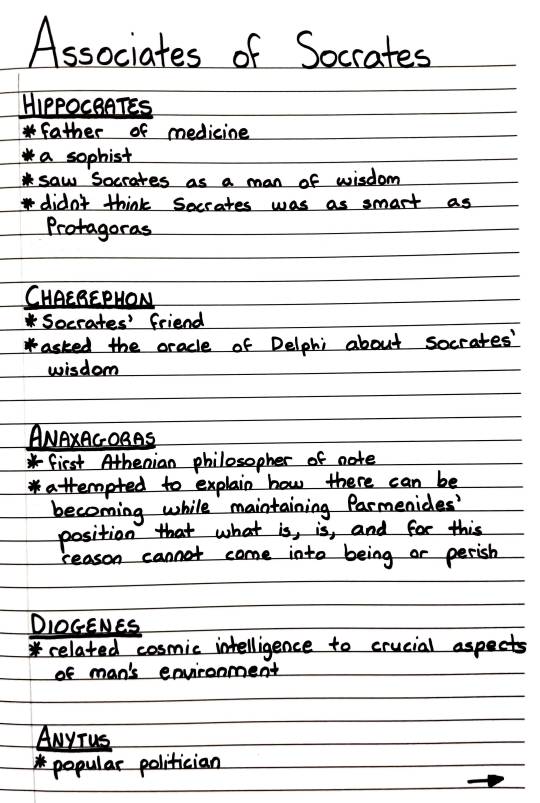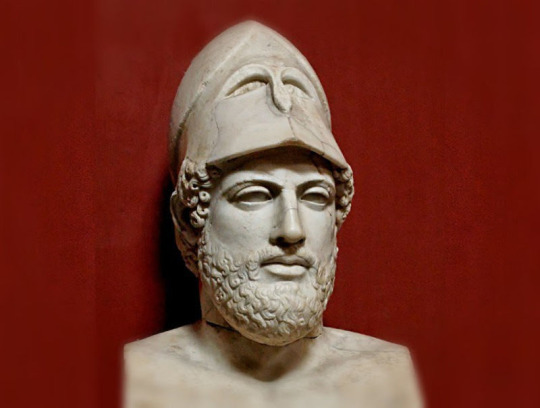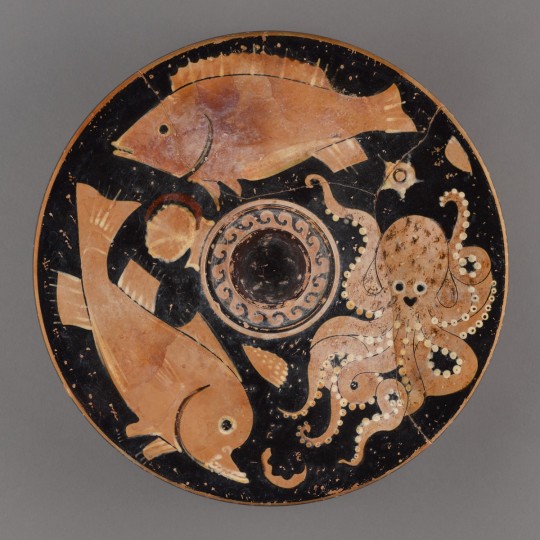#ancient greeks
Text
Before you heal someone, ask him if he's willing to give up the things that make him sick.
Hippocrates
#hippocrates#quotes#philosophy#wisdom#life#writer#psychology#write#ancient greeks#ancient greece#idea#ideas#art#artist
151 notes
·
View notes
Text
Alcibiades says εγωγε a lot in alcibiadds 1. He never says εγω . Not once . I checked . That very cute . I dont know if there is any actual reason for it but as far as i know both words mean " i " but εγωγε is more fancy and flashy and showy and provied a bit more umph . Adorable . Its also included by the writer of the book , probably not a think alcibiades actually used often since its not consisntent to alcibiades speach patterns ( well thucis interpertation of his speah patterns, which i take to be more accurate because come on its thuci ) . I know because when i was reading thuci i also checked contsantly to see is alcis was using εγωγε and he sadly wasnt ( i am obsessed with the word εγωγε ) . What an adorable thing for the writer to include .
#basically εγωγε exists to be extra . cute word#and ουτοσι is a cute word too . kritias said that about theramenes . cute little word . means “ he right there ” and its basically the word#“ he ” but extra . adorable#ancient greeks#ancient greece#ancient greek#alcibiades#socrates
33 notes
·
View notes
Text
Time Travel Library of Alexandria/Lost Literature Winners Match Up 3:
Winners head to head.
37 notes
·
View notes
Text
Also, Alexander the Great’s eyes were heterochromatic - one blue, one brown.
He was a literal Wattpad heroine.
44 notes
·
View notes
Text
🎶 Hey, hey! We’re The Thinkers! 🎶




#very brainy#ancient Greeks#socrates#plato#diogenes#aristotle#philosphy#philosophers#horrible histories gifs#horrible histories#ben willbond#jim howick#larry rickard#laurence rickard#mat baynton#mathew baynton#six idiots#the six idiots#them there#i made these
151 notes
·
View notes
Text
Flags of the Athenian Empire


These are the flags of the Athenian Empire. I couldn’t decide which I liked better, so I went with both of them. They come from a world where Athens won the Peloponnesian War. Following the defeat of Sparta, the Delian League was expanded to include the Greek colonies in Italy, the city-states in Anatolia and all of Greece. All of this new territory meant more treasure for Athens' coffers. Athens used much of this new-found wealth to expand its military and navy. The unification of the Greek city-states meant that the Macedonian Conquest never occurred, and Alexander the Great never came to power. Though it was still known as the Delian League, in reality, all of the city-states knew that they were now part of the Athenian Empire.
The threat of Persia was an ever-looming concern. Athens funded many rebellions against Persia in regions such as Egypt and the Levant. Eventually, Athens declared war on the Persian Empire and conquered it in short order. However, most of the territory was lost within a few generations. Athens also went on to conquer Carthage, the fledgling Roman Republic and expanded its territory into Gaul. Athens also expanded into Hispania and the British Isles, but never for too long.
Following this series of conquest Athens began to focus more intellectualism and the acquisition of knowledge. Many libraries and centers of learning were founded across the Athenian Empire. The Athenian Empire never truly fell, but over the years it did lose territory; at its smallest, it was comprised of Greece and Anatolia. However, Greek influence on language, art and culture is felt throughout its former empire and the world at large. In many ways, the Athenian Empire can be seen as the Western world's equivalent of China in terms of influence and culture.
The flags feature an owl clutching an olive branch, symbols of Athens patron goddess Athena. The colors of the flags are black and orange in reference to Ancient Greek pottery. The black on the first flag is also a reference to the black sails of Theseus, mythical king of Athens.
Link to the original flags on my blog: http://drakoniandgriffalco.blogspot.com/2017/09/flags-of-athenian-empire.html?m=1
#alternate history#flag#flags#alternate history flag#alternate history flags#vexillology#Athens#Athenian Empire#Flags of the Athenian Empire#Greece#ancient greeks#ancient greece#peloponnesian war#Delian League#athens greece
45 notes
·
View notes
Text
Found Alexander the Great's musical key signature

#alexander the great#ancient greeks#you know macedonian but#music#charpentier regles de composition#we have fun here
12 notes
·
View notes
Text

Pancakes are one of humanities greatest and tastiest inventions!🥞
🥞🍯🥞
#history#pancakes#food#alita dolcia#breakfast#medieval europe#ancient greek history#roman history#delicious#street vendor#ancient#medieval#food history#flapjacks#hotcakes#honey#breakfast food#medieval history#cratinus#ancient greeks#ancient history#ancient romans#nickys facts
34 notes
·
View notes
Text
Associates of Socrates


Patreon
#studyblr#notes#history#historyblr#western civ#western civilization#western civ 1#western civilization 1#socrates#ancient greece#greece#greek philosophy#philosophy#philosophers#introductory philosophy#greek philosophers#philosophers of ancient greece#ancient greek philosophers#lycon#meletus#diogenes#hippocrates#anytus#anaxagoras#chaerephon#ancient greeks#ancient history#greek history#ancient greek history#world history
9 notes
·
View notes
Note
https://vm.tiktok.com/ZMF3GSCxQ/
the way they portray how ancient Greeks looked like back then look so similar with today's Greeks :0
I am laughing especially in the comments some say: i have fought with some that look like them for a parking spot lol 😂 or i am pretty sure Ippokratis has served me seafood on a restaurant
I know right XD
The thing is that foreigners often imagine Ancient Greeks to look like what statues of Greek gods and goddesses looked like and ignore the statues of actual human Greeks that walked the earth. They also ignore that god statues depicted the gods in an eternal youth, late puberty or very early adulthood, and always in very strict standards of what ideal (maybe unrealistic?) beauty must have been like to them. This means most people definitely did not look like Apollo or Aphrodite, except maybe 17 year old beardless curly boys. Nowadays boys style their hair very short and try to grow beards as soon as possible so it's harder to make a comparison. Then again older gods, like Zeus, Poseidon and Hades are much closer to what real Greeks look(ed) like maybe because there wasn't so much a focus on their youthful ideal beauty but on their mature manhood.
As for real people, I am not exaggerating at all when I am saying I don't really see a particular difference with modern looks, save perhaps for the toll the hardship of living 2500 years ago took. We should not forget after all - the Greeks never left the East Mediterranean so they must have mixed more with Mediterraneans than other people so it wouldn't make sense for their looks to change dramatically.
Seems as good a time as any to confess my love for Pericles:

101 notes
·
View notes
Text
Greek Pottery: Another Fish Platter from Paestum
Another 4th-Century fish platter from Paestum. (With a happy #octopus!)

View On WordPress
124 notes
·
View notes
Text

24 notes
·
View notes
Text

"The Palace of Aigai, built more than 2,300 years ago during the reign of Alexander the Great's father, is seen from above after it fully reopened in ancient Aigai, some 65 kilometers (40 miles) southwest of the port city of Thessaloniki, northern Greece, on Friday, Jan. 5, 2024. It was the largest building of classical Greece: The palace where Alexander the Great was proclaimed king before he launched a conquest that took him as far as modern-day Afghanistan. (AP Photo/Giannis Papanikos)"
#palace of aigai#aigai#alexander the great#greece#palace#thessaloniki#ancient greece#classical greece#archaeology#news#ancient greeks#ap news
8 notes
·
View notes
Text
Ok but Nakia talking about how the Ancient Greeks and Romans are taught in Western countries more predominantly than the Persian and Byzantine Empires WAS SO GOOD. I know it was throw away line, but like IT'S TRUE AND SHE'S RIGHT. It's time to diversify your history lessons.
#i was gonna rant a lot more but i think this gets the message#history is sometimes taught with such bias and ugh it annoys me#the persians though brutal were pretty cool#ancient greeks you mean the ancient MISOGYNISTS#romans you mean COLONIALISM#ok I'll stop#ms marvel#nakia#kamala khan#bruno#marvel#history#persian empire#roman empire#ancient greeks
178 notes
·
View notes
Text
Bilbo meme like. And, after all, why not. Why should I NOT handwrite my notes on non-fiction about Ancient Greece in a notebook and put pretty stickers on the margins. Who is going to be hurt. Who is going to stop me.
3 notes
·
View notes
Text
Flag of the Minoan Empire

This is the flag of the Minoan Empire. It comes from a world where the eruption of Thera never happened. As a result the Minoan civilization continued to flourish and eventually went on to conquer the Mycenaeans. The Minoans forged several trade networks and founded an empire that stretched across the Mediterranean. The Minoan conquest of the Mycenaeans meant that Ancient Greek civilization, as we know it, never came to be.
The Minoan Empire prospered for many centuries, but just as Greece and Rome did in our world, eventually it had to come to an end. However, just as later civilizations looked to Greece and Rome for influence and inspiration, so to did the future civilizations of this world look to the Minoans. Minoan culture cast a heavy shadow on future civilizations, and the legacy of the art and ideas would live on even after thousands of years.
The dark purple represents the wine-dark sea, and the Minoans control over it. The golden axes are Labrys, a type of double bladed axe commonly found in Minoan artwork and ruins. They are believed to have symbolized authority.
Link to the original flag on my blog: https://drakoniandgriffalco.blogspot.com/2016/02/flag-of-minoan-empire.html?m=1
#alternate history#flag#flags#alternate history flag#alternate history flags#vexillology#ancient greeks#ancient greece#greece#crete#minoan#minoans#Minoan Empire#Mycenaean#mycena#Mycenaeans#alt history
28 notes
·
View notes